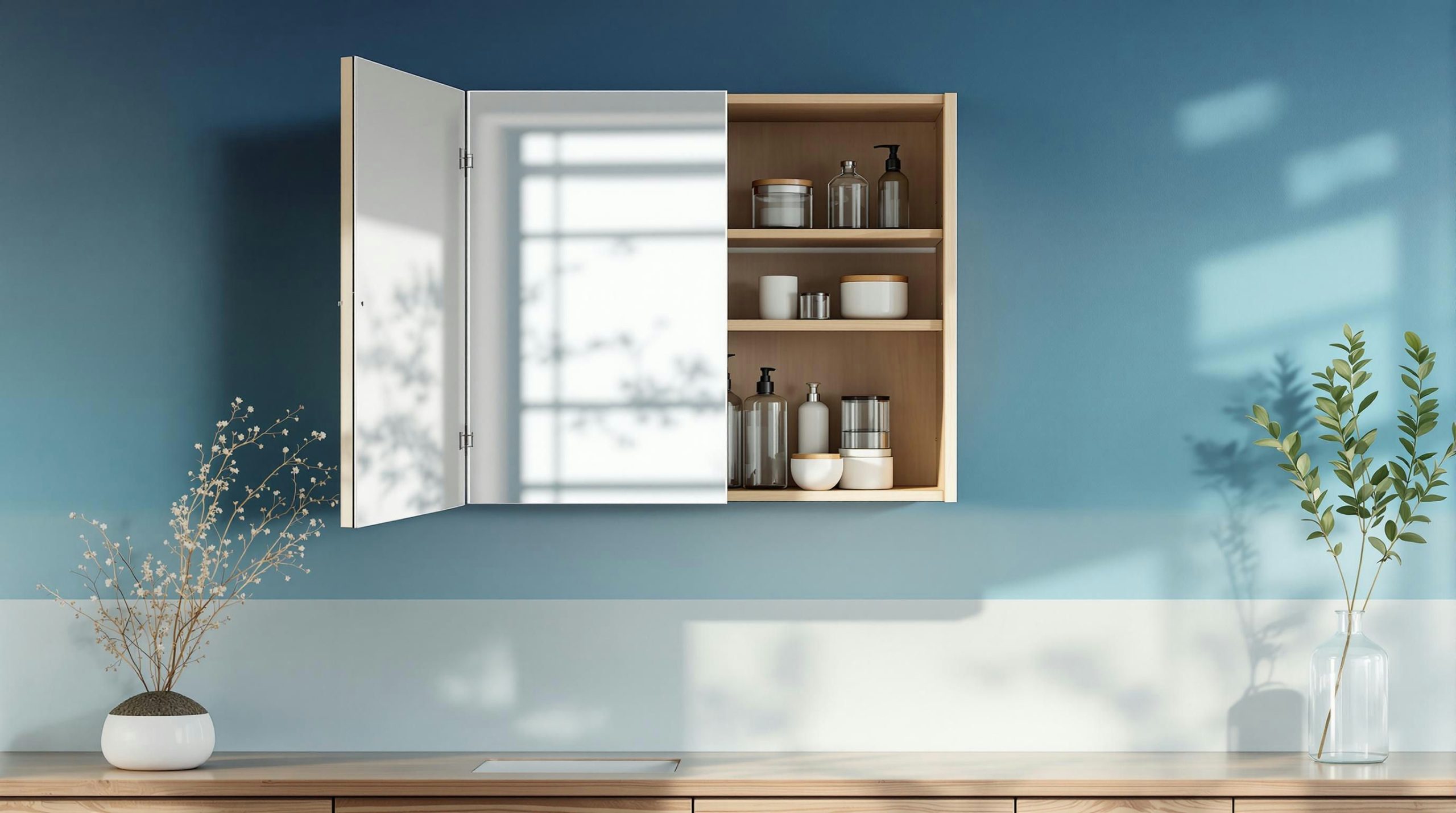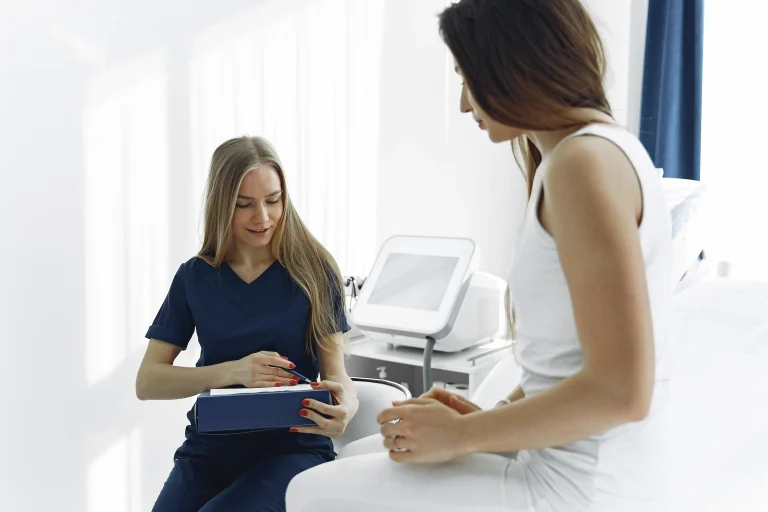Build Your Family’s Medicine Cabinet: A Practical Guide to Essential Supplies and Safe Usage
Build Your Family’s Medicine Cabinet: A Practical Guide to Essential Supplies and Safe Usage
Imagine a rainy Toronto evening when a sudden scrape or bout of headache catches you unaware. Instead of scrambling to find help, you calmly reach for your well-stocked family medicine cabinet—a small but powerful resource that lets you handle everyday health issues with confidence. In this guide, we’ll walk you through creating and maintaining an essential medicine cabinet that covers basic over-the-counter (OTC) medications and first aid supplies. Whether you’re a new parent, a caregiver, or simply proactive about your family’s health, this guide offers practical advice, step-by-step checklists, and safety tips to ensure you’re prepared for common health bumps along the road.
With a focus on genuine, dependable guidance, we’ll help you learn what items to stock, how to use them safely, and when to seek professional care. And if you ever need further help or advice, remember that Care& Family Health is here to support you with accessible, friendly healthcare services tailored for your needs.
Why a Well-Stocked Medicine Cabinet Matters
A thoughtfully stocked medicine cabinet isn’t just a box of products—it’s an essential home health resource that can:
- Provide immediate relief for minor ailments
- Help reduce unnecessary trips to urgent care facilities
- Empower you with first aid supplies to handle minor injuries
- Serve as a preventive measure to manage conditions before they worsen
When minor issues arise, having practical supplies at your fingertips not only saves time and money but also helps avoid complications. Equipping your home with the right OTC medications and first aid essentials is a smart way to handle everything from muscle pain and allergies to small cuts and bruises.
Creating a Customized Checklist for Your Family
Every family is unique, and so is every medicine cabinet. Factors like the ages of your family members, pre-existing conditions, and preferred treatment methods come into play when deciding what to stock. Here’s how you can build a comprehensive, customized checklist:
1. Assess Your Family’s Needs
Take a moment to consider the health history and common issues faced by your family members. Ask yourself:
- Do you have young children who might need special formulations or child-proof packaging?
- Are there chronic conditions like migraines, allergies, or digestive issues among your family members?
- What past minor injuries or common aches does your household experience?
Your answers will guide you in selecting the right medications and supplies.
2. Organize by Category
Organizing your supplies into categories can help ensure nothing important is overlooked. Think of dividing your cabinet into sections such as:
- Pain Management and Fever Reduction
- Digestive Aids and Allergy Relief
- Cold and Flu Remedies
- First Aid Essentials
- Specialty Items (for specific conditions or extra care)
Essential Over-the-Counter Medications
OTC medications form the backbone of most medicine cabinets and can address a range of everyday ailments. Here’s a list of common categories along with tips on their safe and effective use:
Pain Relievers and Fever Reducers
Acetaminophen (Tylenol):
Ideal for reducing fever and managing pain—from headaches to minor aches. It’s generally safe when taken as directed, but always check the dosing instructions and be cautious with prolonged use.
Ibuprofen (Advil, Motrin):
An anti-inflammatory that helps reduce pain, fever, and swelling. It can be particularly helpful for sore muscles and injuries. However, ibuprofen should be used with caution in individuals with certain health conditions, like stomach ulcers or kidney issues.
Tip: Always store these medications in their original containers with labels intact so dosages remain clear and you have access to expiration dates.
Digestive Aids
Antacids (Tums, Rolaids):
Effective for managing heartburn and indigestion. They neutralize stomach acid and help soothe discomfort quickly.
Laxatives and Stool Softeners:
Useful for easing occasional constipation, but make sure to follow the recommended dosage to avoid dependency.
Anti-Diarrheal Medications (Imodium):
These can be a real lifesaver during bouts of diarrhea, but be aware of any underlying conditions that might require medical attention if symptoms persist.
Safety Note: Digestive aids should be chosen based on individual tolerance. If your family members have recurring digestive issues, it might be a sign to seek further medical advice instead of relying solely on OTC options.
Allergy and Cold Medications
Antihistamines (Benadryl, Claritin):
These help manage symptoms of allergies, such as sneezing, runny noses, and itchy eyes. Non-drowsy formulas are a good choice for daytime use, especially if you have children.
Decongestants:
Medications that relieve nasal congestion. However, they should be used sparingly, as overuse might lead to rebound congestion.
Cough Suppressants and Expectorants:
These are useful for managing coughs during a cold or respiratory infection. They work in tandem—one soothes the cough while the other helps clear mucus from the respiratory tract.
Usage Tip: Read labels for multi-symptom cold remedies to avoid accidental overdose of active ingredients. If you’re uncertain about which product to choose, a quick consultation with a pharmacist or your healthcare provider can offer clear advice.
Topical Medications
Antibiotic Ointments:
Keep these in your first aid kit to prevent infection from minor wounds, cuts, or scrapes. An over-the-counter antibiotic ointment is a straightforward way to protect minor skin injuries.
Hydrocortisone Cream:
Useful for reducing inflammation and itching from insect bites, mild rashes, or allergic reactions. It should be used only on small areas and for a limited time, as directed on the packaging.
First Aid Essentials for Home Safety
When accidents happen, a few basic first aid supplies can make all the difference. A well-resourced first aid kit should include supplies that address a broad range of incidents, from minor cuts and burns to sprains. Here’s what every household should keep on hand:
Bandages and Dressings
Adhesive Bandages (Band-Aids):
These come in various sizes and are essential for covering small cuts and abrasions. Look for waterproof options for added durability.
Sterile Gauze Pads and Adhesive Tape:
Important for covering larger wounds. Sterile gauze can help control bleeding and protect the wound from infection until professional help can be secured, if needed.
Elastic Bandages (Ace Wraps):
Useful for supporting sprained joints or controlling swelling. They provide compression and help secure dressings in place.
Tools and Disinfectants
Antiseptic Wipes or Solutions (e.g., alcohol wipes):
The first step in treating any injury should be cleaning the area properly. Antiseptic wipes help reduce the risk of infection.
Tweezers and Scissors:
A pair of clean tweezers is invaluable for removing splinters or debris, while scissors can help trim tape or clothing when a wound needs to breathe.
Digital Thermometer:
A must-have item during flu season or for monitoring children’s fevers. Accurate measurement of body temperature helps determine whether a condition needs medical attention.
Specialty First Aid Items
Instant Cold Packs:
Excellent for reducing swelling and pain from bumps or sprains. These packs often don’t require refrigeration, making them convenient for storage in your cabinet.
Burn Cream or Gel:
Keeps minor burns less painful and prevents infection. Always check the ingredients and directions for safe application.
Emergency Contact and Instruction Card:
Including a list of emergency numbers (local ambulance, poison control, etc.) alongside basic first aid instructions can be a lifesaver during emergencies.
Important Reminder: Regularly check the expiration dates on all medications and supplies. Replace items that have expired or have been used. This practice ensures that your medicine cabinet remains a reliable safety net when you need it most.
Tips for Maintaining and Using Your Medicine Cabinet Safely
Building your medicine cabinet is only half the battle—the key is maintenance and safe usage. Here are some practical tips to ensure your supplies remain effective and safe:
Regular Inventory Checks
- Mark a recurring schedule (every 6 to 12 months) to inspect your medicine cabinet for expired or nearly expired items.
- Create a simple checklist that you can update as you use items or add new ones. Keeping a digital or printed log can help streamline this task.
Storage Conditions Matter
Temperature Control:
Store medications in a cool, dry place away from direct sunlight. Bathrooms may seem like a natural choice, but humidity can reduce the effectiveness of some products.
Child Safety:
If you have young children, ensure that all medications and supplies are stored in secure, childproof cabinets. Consider using lockable containers or high shelves that are out of reach.
Understanding Dosages and Directions
Always read and follow the dosage instructions provided on the packaging. Rest assured that this information is tailored to ensure safety when used as directed.
For medications that require calculation (based on a child’s weight or age), don’t hesitate to consult with a pharmacist or your doctor. It’s always better to double-check than to risk an incorrect dosage.
Look out for warnings regarding possible interactions, especially if family members are on prescription medications. Even OTC medicines can interact with other treatments.
Knowing When to Seek Medical Help
While a well-stocked medicine cabinet can help with minor issues, recognize the limits of self-care. If symptoms persist, worsen, or are accompanied by other concerning signs (such as high fever or severe pain), professional medical attention is crucial.
If you’re unsure whether a condition can be managed at home, contact a healthcare provider. Services like those offered by Care& Family Health, with their easy-to-use appointment system and unlimited phone/video consultations, can help determine whether an in-person visit is necessary.
Remember: Your medicine cabinet is a supplement to, not a substitute for, professional medical care. Use it as your first line of defense, but know when to reach out for expert advice.
Organizing Your Medicine Cabinet: Practical Steps
Now that you understand what to include and how to use each item, let’s look at organizing your cabinet efficiently. A well-organized cabinet not only saves you time during an emergency but also ensures that all supplies are visible and accessible.
- Categorize and Label:
Use small bins or containers to group your supplies. Label each container with the category it represents (e.g., “Pain Relief,” “Digestive Aids”). This method helps everyone in the household quickly find what they need without hunting through disorganized shelves. - Designate a Specific Location:
Identify one or two locations in your home where your medicine cabinet will reside. A consistent location—ideally one that’s cool, dry, and secure—allows every family member to know exactly where to look in case of an emergency. - Keep an Updated Inventory Sheet:
Maintain a written or digital record of what you have, including expiration dates. This habit makes it easier to update your stock and re-order items that run low. A quick review of your inventory during seasonal changes is a proactive way to avoid surprises. - Educate Family Members:
Go over the location and organization of your medicine cabinet with everyone in the family (adjusting the discussion appropriately for kids and adults). A simple family meeting can ensure that everyone understands basic safety, the importance of not misusing medications, and how to call for help when needed.
Health and Safety Considerations: Balancing Preparedness with Responsibility
While building a robust medicine cabinet is empowering, it’s equally important to maintain a balance between preparedness and responsibility. Here are a few guidelines to help you navigate this balance:
- Avoid Hoarding Unnecessary Items:
Stocking up on everything you see can lead to waste and increased risk of expired medications. Stick to a focused list that meets your family’s needs, updating it as circumstances change. - Practice Safe Disposal:
Medications and supplies that have passed their expiration date, or that you no longer need, should be disposed of properly. Many communities, including parts of Toronto, offer medication take-back programs to ensure safe disposal without harming the environment. Ask your local pharmacy or public health unit if you’re unsure how to dispose of certain items. - Stay Informed:
Healthcare is an ever-evolving field. What is considered best practice today might change in the future. Make it a point to review trusted sources, such as your healthcare provider or reputable online medical resources, to keep up with current recommendations regarding OTC and first aid supplies.
Practical Scenarios: When Your Medicine Cabinet Becomes Your First Responder
Imagine these everyday scenarios where a well-stocked medicine cabinet can make all the difference:
- Minor Cuts and Scrapes:
A child falls while playing in the yard, scraping their knee. Instead of panicking, you clean the wound with antiseptic wipes, apply an antibiotic ointment, and dress the cut with a sterile gauze pad and bandage. The injury is managed promptly, reducing the chance of infection. - Sudden Headache or Fever:
On a chilly evening, an adult experiences a sudden headache paired with a mild fever. Reaching for acetaminophen in a well-organized cabinet, the individual finds prompt relief with safe dosing guidelines clearly visible on the label. If symptoms had persisted, knowing when to contact a healthcare provider could make all the difference. - Seasonal Allergy Flare-Ups:
During spring, when pollen counts are high, having non-drowsy antihistamines on hand can help alleviate sneezing and watery eyes, allowing you to maintain comfort and focus on daily activities until professional advice is needed for recurrent issues.
These scenarios highlight why having a tailored medicine cabinet isn’t merely about storing products—it’s about being prepared, staying safe, and knowing how to react appropriately when minor health issues arise.
Integrating Professional Healthcare Support into Home Preparedness
Even the best-prepared medicine cabinet has its limits. When ailments persist beyond what OTC products can manage, timely intervention by a healthcare professional becomes key. Care& Family Health, with its emphasis on accessible and efficient care, offers a range of services from in-clinic appointments to secure phone and video consultations. The ease of one-click prescription refills and real-time access to health records means that you can quickly transition from home care to professional advice when needed.
By maintaining your medicine cabinet alongside a trusted partnership with healthcare providers, you ensure that every level of care—from at-home management to expert consultation—is seamlessly integrated. This holistic approach not only enhances your overall wellbeing but also gives you peace of mind knowing that help is always within reach.
Final Thoughts: Empowering Families Through Preparedness and Care
Building a comprehensive family medicine cabinet is more than a checklist—it’s an ongoing commitment to health, safety, and prevention. By understanding which OTC medications and first aid supplies are essential, how to store and use them safely, and when to seek medical advice, you’re laying the foundation for a well-prepared, resilient home environment.
Take a few moments today to review your current supplies, identify any gaps, and consider the practical tips provided here. Maintaining an updated, well-organized medicine cabinet can help you respond swiftly to life’s little health surprises and reduce anxiety during minor emergencies.
If you ever have questions or need further guidance on managing your home health supplies—as well as advice on broader healthcare needs—remember that Care& Family Health is here to help. Our caring team of Nurse Practitioners is dedicated to guiding you through every step of maintaining a healthy lifestyle, whether via an in-clinic visit or through convenient phone and video consultations.
Embrace preparedness today by taking these steps to build and maintain your family’s medicine cabinet. In doing so, you’re not only protecting your health but also creating a safe, informed space for the ones you love.
Frequently Asked Questions (FAQs)
- What are the top items I should always have in my home medicine cabinet?
A basic medicine cabinet should include pain relievers (like acetaminophen and ibuprofen), digestive aids (antacids, laxatives), OTC allergy medications, a selection of cold and flu remedies, and essential first aid supplies such as adhesive bandages, sterile gauze, antiseptic wipes, and a digital thermometer. - How often should I check and update my medicine cabinet?
It’s a good idea to review your medicine cabinet every 6 to 12 months to discard expired items and restock essential supplies. Regular checks help ensure that your medications remain safe and effective in case of an emergency. - How can I ensure my family uses OTC medications safely?
Always follow the dosage instructions on the package, store medications in their original containers away from children, and consult with a healthcare professional if you have concerns about interactions or if symptoms persist. Clear labeling and proper organization also help prevent misuse. - When should I decide that a symptom needs professional medical attention instead of home care?
If symptoms worsen, persist despite taking OTC remedies, or are accompanied by concerning signs (like high fever, severe pain, or difficulty breathing), it’s important to seek advice from a healthcare provider. Services like those from Care& Family Health make it easy to get professional help quickly. - Where can I get more advice on home healthcare and building a safe medicine cabinet?
Trusted sources include your primary care provider, local pharmacies, and reputable Canadian health organizations. Additionally, with its unlimited clinic visits and seamless phone/video consultations, Care& Family Health is a great resource for personalized guidance on managing your home health supplies.
By incorporating these insights into your daily routines, you can feel more confident and secure about managing minor health issues at home. Remember, a well-stocked medicine cabinet paired with professional support creates a strong foundation for your family’s overall wellbeing.
Less Wait Time, More Face Time
Visit www.careand.ca to register
Contact Information:
📞 Phone: +1-647-951-4770
📧 Email: helpdesk@careand.ca
🌐 Website: www.careand.ca
Disclaimer:
This article is for informational purposes only and does not constitute medical advice. Always consult with a qualified healthcare provider for personal medical guidance. The information provided is general in nature and may not apply to individual circumstances.







